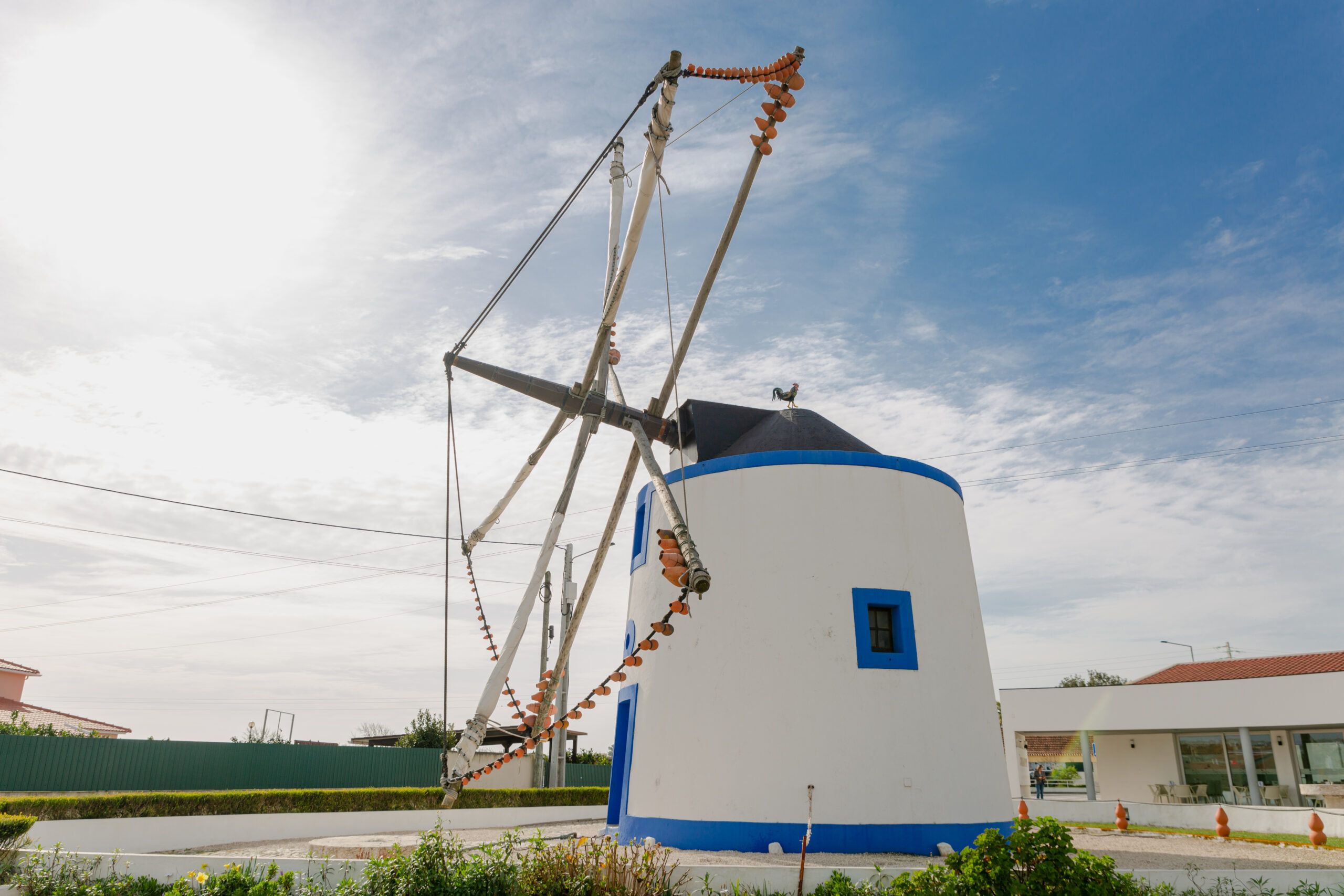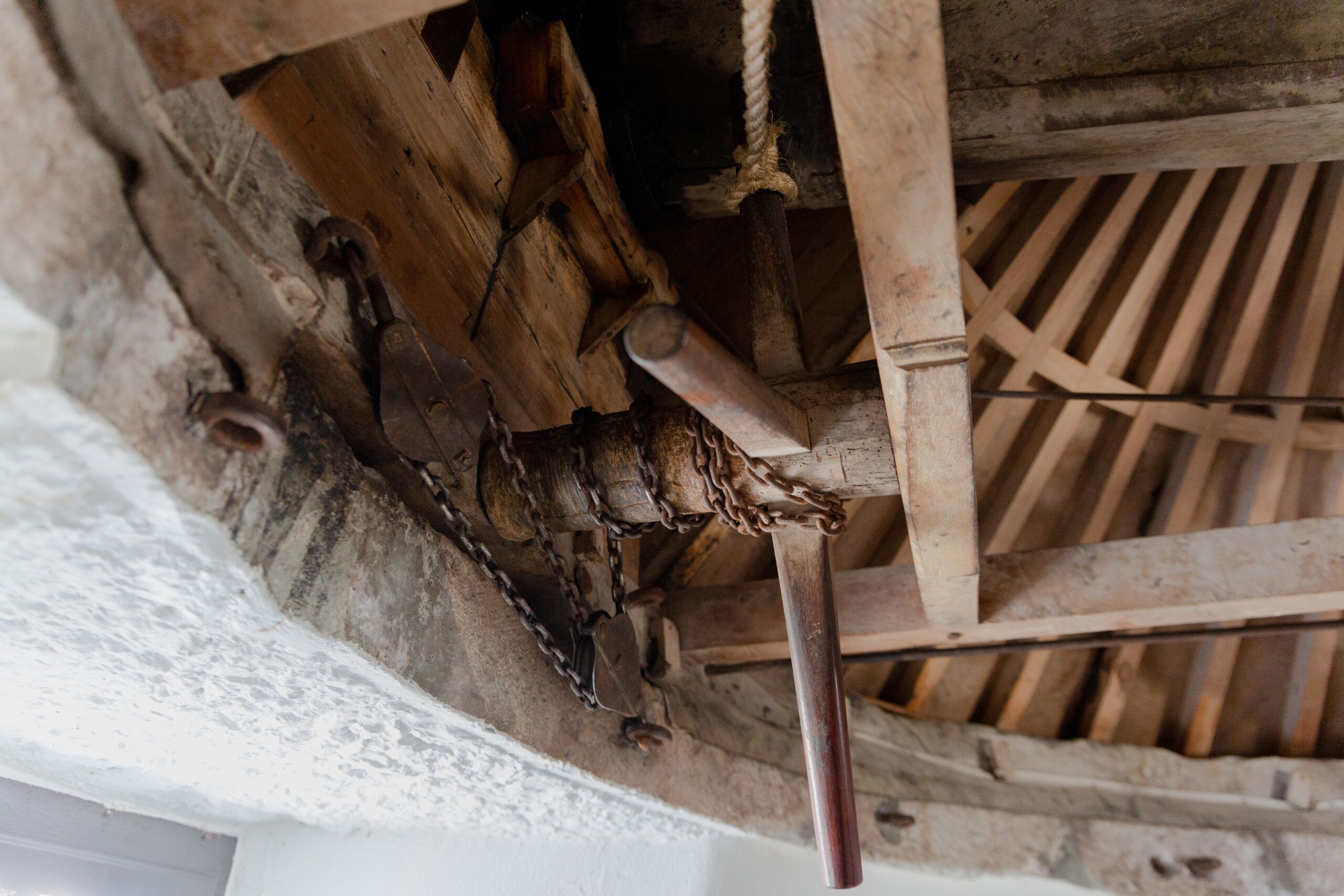Oeste Windmills
Categories/tags: Utilization of water and wind power.
Historical context: Windmills, iconic structures designed to harness the power of the wind, constitute a traditional facet of Portugal’s rich heritage. As a subset within the broader category of traditional milling systems utilizing renewable energies, windmills stand out for their intricate construction and historical significance. Unlike other systems, such as tidemills or watermills, windmills represent a pinnacle of technical prowess, demanding specialized knowledge in masonry and carpentry, akin to shipbuilding.
Form – main architectural features: Comprising two essential components, the house (tower) and the engine, these windmills boast a distinctive architectural structure. In southern Portugal, the house is a circular construction, forming a cylindrical tower often whitewashed or painted white, crowned with a conical and rotating black roof known as the “capelo”. Beyond providing shelter for the engine, the house serves the crucial role of optimizing operating conditions.
Function: The construction of windmills involves numerous functional elements, each demanding specific technical skills, such as stone millstones and “búzios” – ceramic pieces affixed to ropes that control the sails. Placed strategically in visible areas exposed to prevailing winds, these windmills serve not only as effective visual landmarks but also as potent identity symbols, particularly in the Oeste (West) region of Portugal. The Oeste region, in particular, boasts the highest concentration of windmills per square kilometer in mainland Portugal.
Cultural heritage and tourism: Over a five-year period, the plan aims to activate and empower the region’s milling community, fostering a participatory citizenship process that ensures the continued existence and revitalization of windmills. Additionally, the plan strives to facilitate intergenerational transmission, innovating and expanding the traditional spectrum of products and services associated with windmills while upholding values of identity and sustainability). In essence, the Windmills of the West embody not only a historical marvel but also a living testament to Portugal’s cultural legacy.
Embark on a virtual journey through the Oeste Windmills, where the past whispers through the wind and the future unfolds through sustainable practices. Join us in celebrating these iconic structures that embody the resilience and cultural richness of the Oeste region.
Location: Silveira – Portugal
Oeste Windmills – Portugal
Sources
Dias, J.; Oliveira, E.V & Galhano, F. (1959). Sistemas primitivos de moagem em Portugal, Instituto de Alta Cultura. Centro de Estudos de Etnologia Peninsular. Imprensa Portuguesa. Porto. 1959.
Miranda, J. & Viegas, J. (1997). Moinhos de vento no concelho de Oeiras, Câmara Municipal de Oeiras.
Miranda, J. (coord.) (2020). Oeste – Moinhos com Futuro. Plano de Salvaguarda e Valorização dos Moinhos do Oeste, Comunidade Intermunicipal do Oeste. Retrieved January 11th, 2024, from https://api.oestecim.pt/uploads/1/1/Projetos/CulturaTurismo/CIMOESTEMOINHOS.pdf





